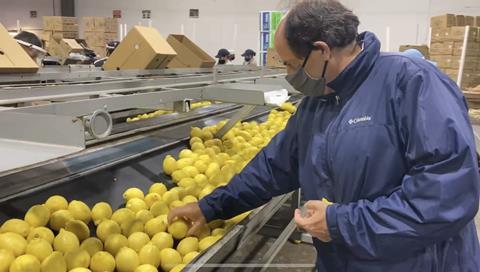CEO Alejandro Moralejo analyses the current US import citrus market as it transitions from Northern to Southern Hemisphere supply
Salix Fruits is reporting a steady arrival of citrus as the Northern Hemisphere citrus season draws to a close and the Southern Hemisphere season begins.

According to CEO Alejandro Moralejo, South Africa, the major citrus supplier in the Southern Hemisphere, has grown across all citrus varieties.
“The first week of April, South Africa started with lemon shipments to the Middle East, its most important market, and to Canada,” he said.
Currently, the US is also sourcing the last shipments of lemons from Mexico while Argentina is starting its shipments to Canada, along with Russia and other parts of Europe. Moralejo noted that despite the summer drought in Argentina, lemon volumes are guaranteed for all markets.
The mandarin market, meanwhile, is still being supplied by the Northern Hemisphere. The US is sourcing the last shipments of mandarins from Morocco, while Chile and Peru are waiting for their crops to be ready.
“Peru will start the early mandarin season in the next few weeks. It will be the late mandarin supplier to Northern Hemisphere markets. The earliest fruit is waiting for market windows in the Northern Hemisphere,” said Moralejo.
In all, Moralejo noted that Southern Hemisphere citrus will have an earlier window this season because of the lack of product from Spain, Morocco, and Turkey, though later production will continue from Mexico, Spain, Turkey, Egypt, and Morocco.
Salix Fruits said it is seeing strong demand for imported citrus in the US and Canada. Moralejo stated that the company will continue offering citrus from its sourcing regions, including Argentina, South Africa, Chile, Peru, and Uruguay.
“We are very pleased with the supply from our Egypt office, which will give us a large volume for the next season in the Northern Hemisphere,” he said.
“This is in addition to the excellent quality product from Spain and Morocco, where Salix has been present for the last two years.”



